
TransBaikal Uniforms
The vast majority of the Baikal Host were cavalry, as they were positioned to guard the long border with China.
1st TransBaikal Cossack Regiment
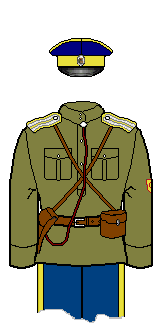 |
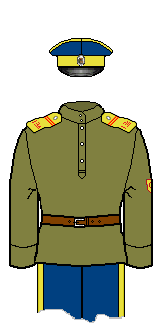 |
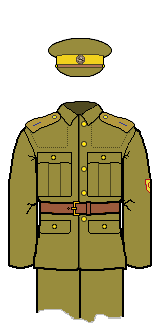 |
 |
|---|---|---|---|
| Officer, full dress | Sergeant, parade uniform | Private in British field uniform | Papakha: men and officers |
The colour of the TransBaikal Host was yellow.
Uniform Details
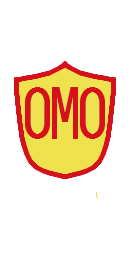 |
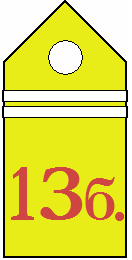 |
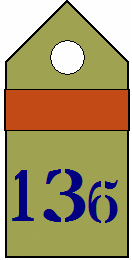 |
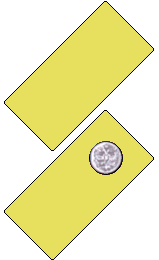 |
| Sleeve patch | Shoulderboards: Sergeant | Shoulderboards: Sergeant-Major | Greatcoat tabs |
The shoulderboards were yellow, with red markings. Khaki ones had the cipher in dark blue. Officer buttons and lace were silver, with rank markings and cipher in gold.
The TransBaikal Regiments were named territorially so that each cipher was a number when needed, followed by an abbreviation for their region. Verkhne-Undinsk (now Ulan-Ude) = ВУд ; Chita = Чт ; Nerchinsk = Нрч ; Argun = Арг ; TransBaikal = Зб. Semënov seems to have reformed at least one regiment of each of these at some time.
Semënov also named his first Cossack Regiment after the Onon River, but sufficiently early that it probably didn't require a cipher (or used "OMO") and another regiment was named after Dauriya, though this might have been "regular" cavalry.
 Semënov also had an "Ataman Semënov" Regiment, formed probably from his most loyal and reliable Cossack supporters. It had an intertwined "AC" as their cipher. All the TransBaikal colours seem to have been otherwise retained.
Semënov also had an "Ataman Semënov" Regiment, formed probably from his most loyal and reliable Cossack supporters. It had an intertwined "AC" as their cipher. All the TransBaikal colours seem to have been otherwise retained.
The distinguishing feature of all Semënov's troops, Cossack or not, was a sleeve badge with the letters "OMO" in red on yellow. Various styles were used, but they were all shield like, with red letters on yellow. The shape of the shield and any piping varied.
Flags
The WWI battle flags were yellow with a diagonal white cross, and the unit cipher marked in red:
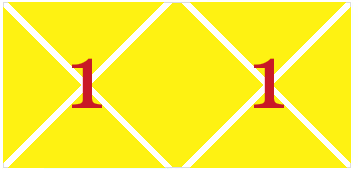
The sotnias would have been marked by banners with yellow over sotnia colour, with a white band in the yellow:

History in the RCW
The 1st TransBaikal Cossack Regiment appears in 1919 and then mutinied and went over to the partisans. It is not clear if it was reformed.
In Primorye another unit of this name was formed with remaining Baikal Cossacks, with 450 sabres. There was also a 2nd TransBaikal Regiment and a plastoon unit.
Other Troops
The few Baikal Cossack plastoons would have dressed more or less the same, but with gold for all metal, and black crosses on the officer papakhas.
Artillery probably dressed in a uniform based on Tsarist artillery uniforms, even when Cossack. Some sources show artillery wearing host colour shoulderboards, which is unlikely. In 1920 Semënov ordered that artillery wear red shoulderboards, which was the Tsarist colour.
Other Comments
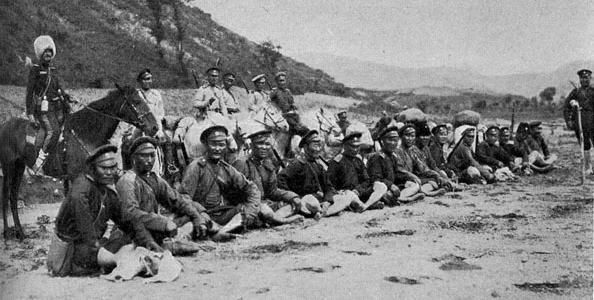
Pre-war TransBaikal Cossacks
The Baikal Cossacks intermarried freely with the local tribes, which gave many of them a very Asiatic appearance. Semënov himself was half Buryat.
Although the officers in the photo above appear to be riding a fairly standard European horse, many Baikal Cossacks rode steppe ponies, as these were much more suited to the conditions.